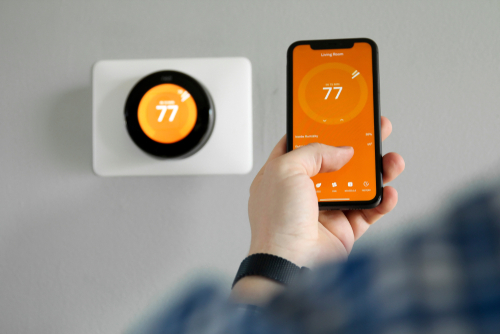We all think of winter as being the most extreme season in Minnesota, but summer brings weather that can also cause damage to our homes. Particularly if you will be gone for long periods of time in the summer, it’s important to understand the risks and how to protect yourself.
You may think that because you will be gone, you can turn your thermostat up or even off over the summer, but this can be risky. If your home gets too hot inside during the humid summer months, the excess heat and moisture can warp wood, peel wallpaper and laminate, encourage mold growth, and cause many other issues in your home. The EPA recommends keeping humidity levels between 30 and 60% to help control mold and other forms of damage.
The longer the heat and humidity penetrate your home, the more complications that can occur. Keep your home at a reasonable temperature and even consider running a dehumidifier when you are gone – saving a few dollars on your utility bill is not worth the risk of causing expensive damage throughout your entire home.
One product that can help in this situation is a smart thermostat. These devices allow you to control the temperature in your home from your phone or computer, no matter where you are. You can adjust your settings based on the local weather and maximize both your utility bill savings and the safety of your home.
In addition to your thermostat settings, there are a few other things you can do to keep your home cooler in the summer: Closing all blinds and curtains to keep the hot sun out can help, and for a very long absence, you may want to close or install your storm windows as well.
Minnesota may be best known for extreme winter weather, but our summers can also bring major storms, high temperatures and uncomfortable humidity. The extreme heat and rain of summer can damage your roof, which can then lead to major water damage inside your home.
High temperatures and lots of sun can crack or curl your shingles, leading to weak spots and deterioration of the roof deck. Humidity can cause condensation to collect on your roof. This excess moisture can eventually cause water damage to your roof and home.
Roofs are designed to protect our homes from summer rain storms, but if your roof is older or otherwise in bad condition, it’s easy for leaks to start forming. Particularly if you are not home to check your attic for signs of water damage after a big storm, big problems can start to form. Summer storms also knock down leaves and branches that can clog your gutters. If your gutters are clogged, then they can’t direct water away from your home.
As we mentioned above, when no one is home to notice damage at your home, things can only get worse with time. Water damage in particular will compound if it is not professionally addressed as quickly as possible. No matter the source, water can spread throughout your home, causing problems ranging from staining to mold to even structural issues. Even without freezing Twin Cities weather, pipes can crack and leak, appliances can break, and hot water heaters can burst. Roofs, doors, and windows can leak, sump pumps can fail, and sewage lines can back up.
If any of these things happens when you are not at home to see it (or smell it) right away, you may be returning home to a big mess. There are lots of steps you can take to prevent these issues. Water alarms, watching your water bills, and having a neighbor check on your home are simple, and there are also solutions like turning off your water and draining your pipes that are bigger projects.
A final preventative measure that every Minneapolis homeowner should take is establishing a relationship with a trusted, local water damage restoration contractor. When you are faced with a sudden, messy situation, you don’t want to be searching for help. At Green Clean, we have been helping Twin Cities homeowners for over 25 years, and our expert teams can respond 24 hours a day and seven days a week to stop the damage to your home. If you want to learn more about our disaster response abilities, contact us today.
Prev: Newly Renovated Space? Stay Covered.Next: When Little Toys Cause Big Problems: Preventing Sump Pump Failures.View All Resources